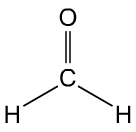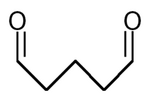Some of you may be a bit confused with the jargon used in this web site so we have compiled a quick introduction here to most of the words we use with extra links to other sources of information.
If you find a word or expression you want to add to this page then please get in touch with our webmaster quoting the URL of the page where you find the phrase.
Formaldehyde
Background
Formaldehyde is a colourless, flammable gas that has a distinct, pungent smell much like that of hay. It's widely used in industry and causes severe health issues if used inappropriately.
Formaldehyde is naturally produced in small amounts in our bodies. It is used in the production of fertilizer, paper, plywood, and urea-formaldehyde resins. It is also used as a preservative in some foods and in many products used around the house, such as antiseptics, medicines, cosmetics and personal care products. It is also used as a preservative in vaccines and given to children. Other exposure to formaldehyde occurs from out-gassing when synthetic materials such as carpets and foam used in cushions etc reach a certain temperature.
Also known as...
- Paraformaldehyde
- Formalin
- Formol
- Methanal
- Methylene oxide
- Oxymethyline
- Methylaldehyde
- Oxomethane
Chemistry

Composition : HCHO
CAS number : 50-00-0
Molar mass : 30.03 g/mol
Melting point : -117 °C (156 °K)
Boiling point : -19.3 °C (253.9 °K)
Download MSDS as PDF : Uploaded on Wednesday April 08, 2009.
Effects on Health
Small concentrations of formaldehyde can irritate the eyes and mucus membranes, resulting in watery eyes, headache, a burning sensation in the throat, and difficulty breathing. Large formaldehyde exposures is converted to formic acid in the body, leading to a rise in blood acidity, rapid, shallow breathing, hypothermia, and coma or death.
In the body, formaldehyde can cause proteins to irreversibly bind to DNA. Laboratory animals exposed to large doses of inhaled formaldehyde over their lifetimes have developed more cancers of the nose and throat than are usual, as have workers in particle-board sawmills. Formaldehyde is classified as a probable human carcinogen by the U.S. Environmental Protection Agency and as a known human carcinogen by the International Agency for Research on Cancer.
External Links
Formaldehyde on Wikipedia
The Formaldehyde Council
RTECS entry for Formaldehyde
Glutaraldehyde
Background
Glutaraldehyde is a colourless liquid with a pungent odor mostly used to sterilize medical and dental equipment or as an embalming fluid.
Also known as...
- Pentanedial
- Glutural
- Cidex
- Glutardialdehyde
- Glutaric aldehyde
- Hospex
- Sonacide
- 1,5-Pentanedial
- 1,5-Pentanedione
- Sporicidin
- Sterihyde
- Novaruca
- Veruca-sep
Chemistry

Composition : C 5 H 8 O 2
CAS number : 111-30-8
Molar mass : 100.12 g/mol
Melting point : -6 °C (267 °K)
Boiling point : 101 °C (374 °K)
Download MSDS as PDF : Uploaded on Wednesday April 08, 2009.
Effects on Health
Because glutaraldehyde is a liquid at room temperature it can affect the health of users as a vapour and through physical contact with the skin. Glutaraldehyde mainly affects the first body tissue it touches causing irritation of the eyes, nose, throat, lungs or skin. These are the most common effects of overexposure:
- Teary eyes, burning nose, sore throat, coughing, and headache. Direct contact with liquid glutaraldehyde severely irritates the eyes and can cause permanent eye damage.
- Glutaraldehyde can remove your skin's natural protective oils. This can irritate the skin and cause dermatitis (skin rash), with dryness, redness, flaking, and cracking of the skin. Glutaraldehyde easily soaks through ordinary clothing and can severely burn the skin beneath it. Repeated skin contact can also cause an allergic skin reaction, with redness, itching, hives, and blisters.
- The vapor can irritate the lungs, causing chest pain and shortness of breath.
Repeated exposure to even low levels of glutaraldehyde can cause asthma. A person who has developed asthma can react even to very small amounts of glutaraldehyde or other irritant chemicals. It is closely related to the cancer-causing formaldehyde.
External Links
Glutaraldehyde on Wikipedia
SafetyDirectory listing
RTECS entry for Glutaraldehyde
IAQ Profile
Background
Indoor Air Quality (IAQ) has recently become an important part of building management as it has a impact on health, safety and productivity of the people who use the buildings in question. An IAQ Profile is a visual presentation of indoor air quality. A good IAQ Profile describes precisely changes in the concentration levels of selected air quality parameters in an indoor environment over a period of time.
 Using an IAQ Profile allows building managers to provide a more comfortable working environment by 'predicting' normal situations. For example, a profile of a typical office may show that CO 2 levels start to rise to a peak at about 08:30 (when employees arrive in the morning) and then dip between 12:00 and 13:00 (employees leave for lunch) before tailing off about 18:00. The air conditioning system could be tied-in with the profile so that it's not used when CO 2 levels are low and fresh air is not required in the room.
Using an IAQ Profile allows building managers to provide a more comfortable working environment by 'predicting' normal situations. For example, a profile of a typical office may show that CO 2 levels start to rise to a peak at about 08:30 (when employees arrive in the morning) and then dip between 12:00 and 13:00 (employees leave for lunch) before tailing off about 18:00. The air conditioning system could be tied-in with the profile so that it's not used when CO 2 levels are low and fresh air is not required in the room.
 As second benefit of using an IAQ Profile is that the building manager can react much faster to 'abnormal' situations. In the above example it could well be that the office is hosting a lunch-time meeting between clients - in this case the CO 2 levels may well rise to a higher peak between 12:00 and 13:00. This could automatically trigger the release of extra fresh air into the room to maintain a productive environment.
As second benefit of using an IAQ Profile is that the building manager can react much faster to 'abnormal' situations. In the above example it could well be that the office is hosting a lunch-time meeting between clients - in this case the CO 2 levels may well rise to a higher peak between 12:00 and 13:00. This could automatically trigger the release of extra fresh air into the room to maintain a productive environment.
By measuring many different parameters (Temperature, Humidity, CO 2 , CO, Formaldehyde or NO 2 ) the IAQ Profile is an important tool in preventing 'Sick' Building Syndrome and as such is a legal requirement for public buildings in many countries.
Sick Building Syndrome
Background
Sick Building Syndrome is concerned with a range of symptoms that can effect a worker in particular building. SBS typically occurs in large open-plan offices with automated heating, ventilation and air conditioning systems. SBS can effect people in a particular part of building or even the entire building itself. Common symptoms include:
- Fatigue
- Headaches
- Shortness of breath
- Loss of concentration
- Eye & throat irritation
- Itchy or dry skin
- Nausea
Sick Building Syndrome cannot be diagnosed precisely, and can effect people in different ways. It is not to be confused with specific building related illnesses however. Illnesses such as Legionnaires disease or exposure to dangerous chemicals. SBS symptoms will usually resolve themselves as soon as the person leaves the room or building.
Common factors that can lead to Sick Building Syndrome:
- Poor Ventilation
- Airborne Pollutants(Dust, Carpet Fibres, Fungal Spores)
- Chemical Pollutants(Light industrial chemical substances, cleaning substances)
- Ozone
- High concentrations of VOC's, Carbon Monoxide and Formaldehyde




